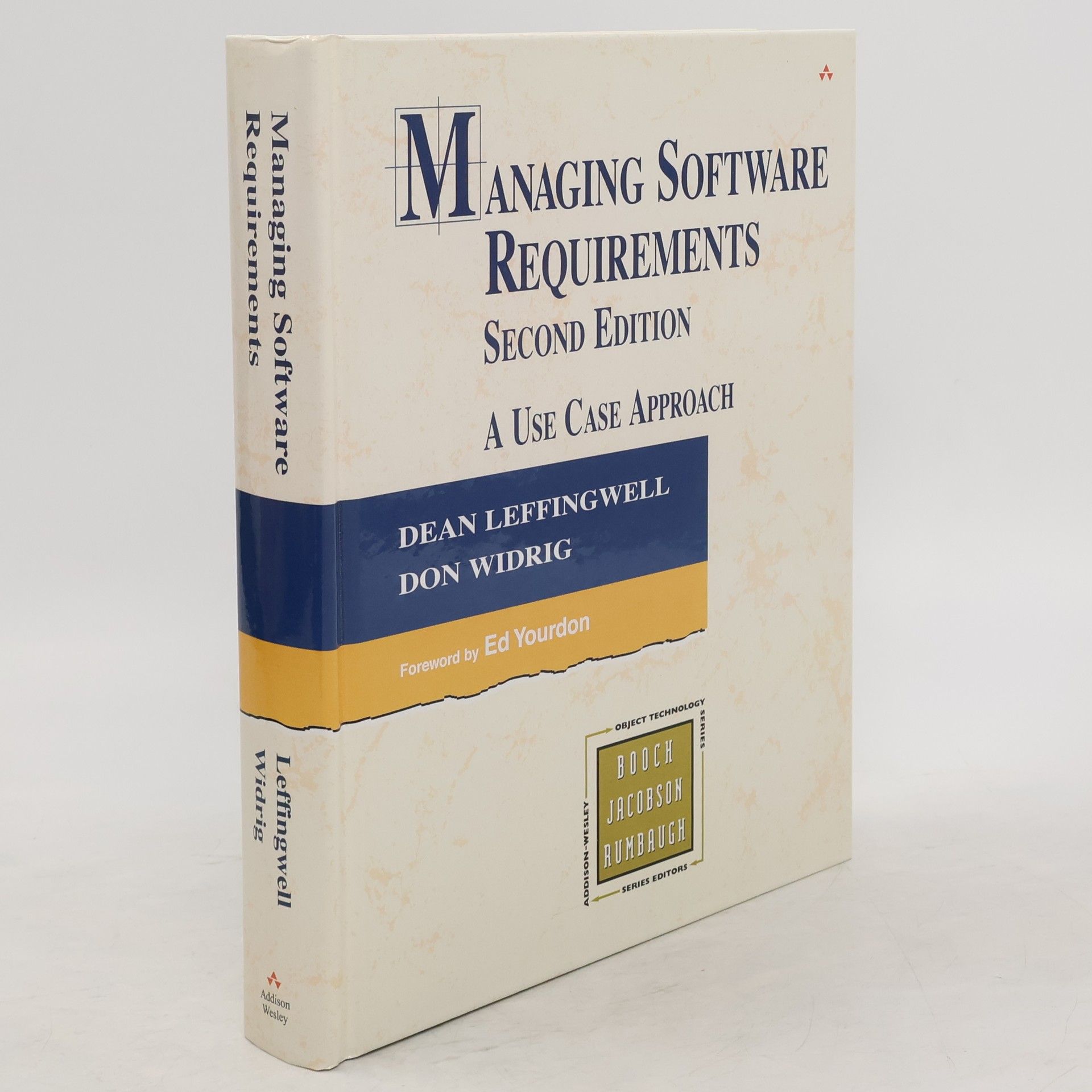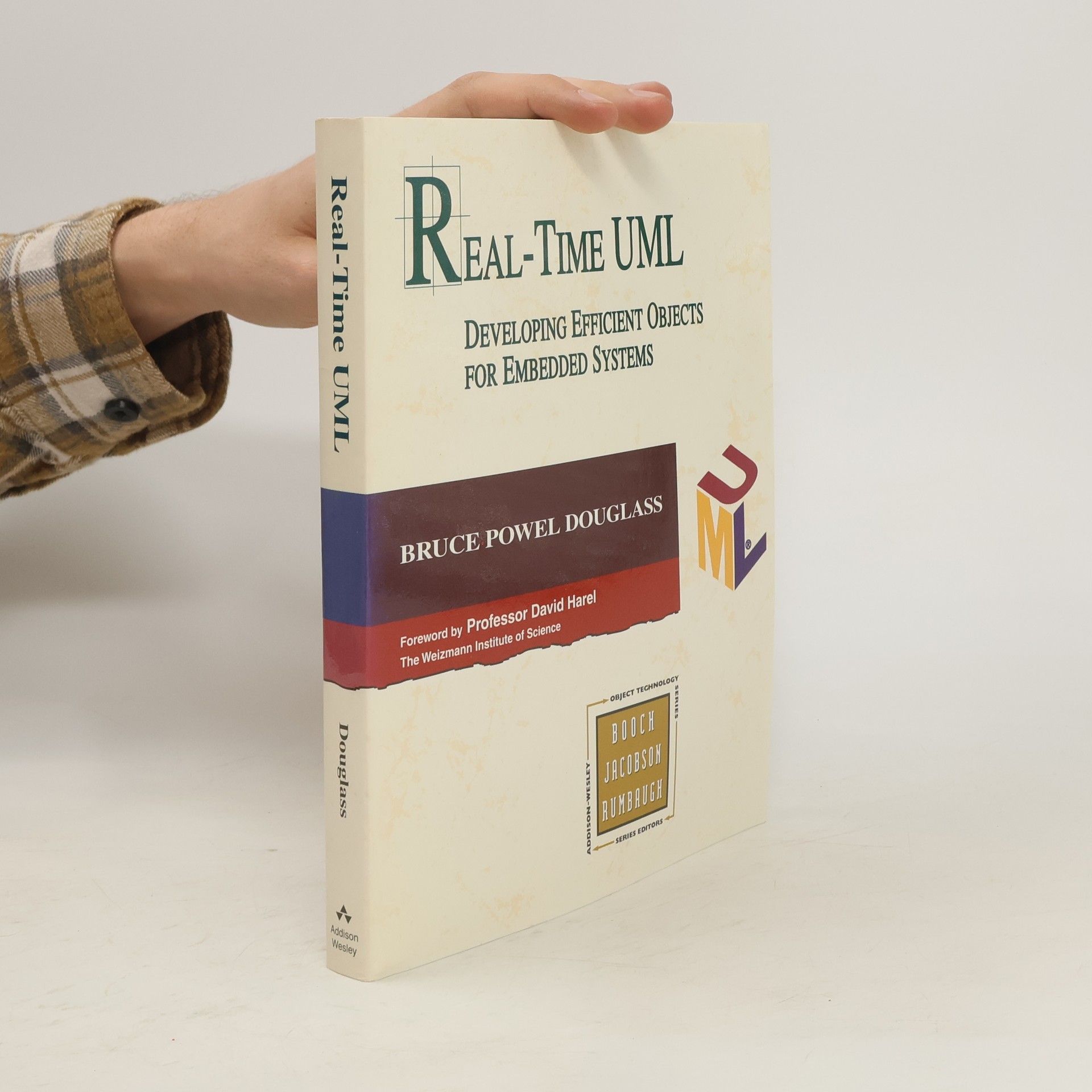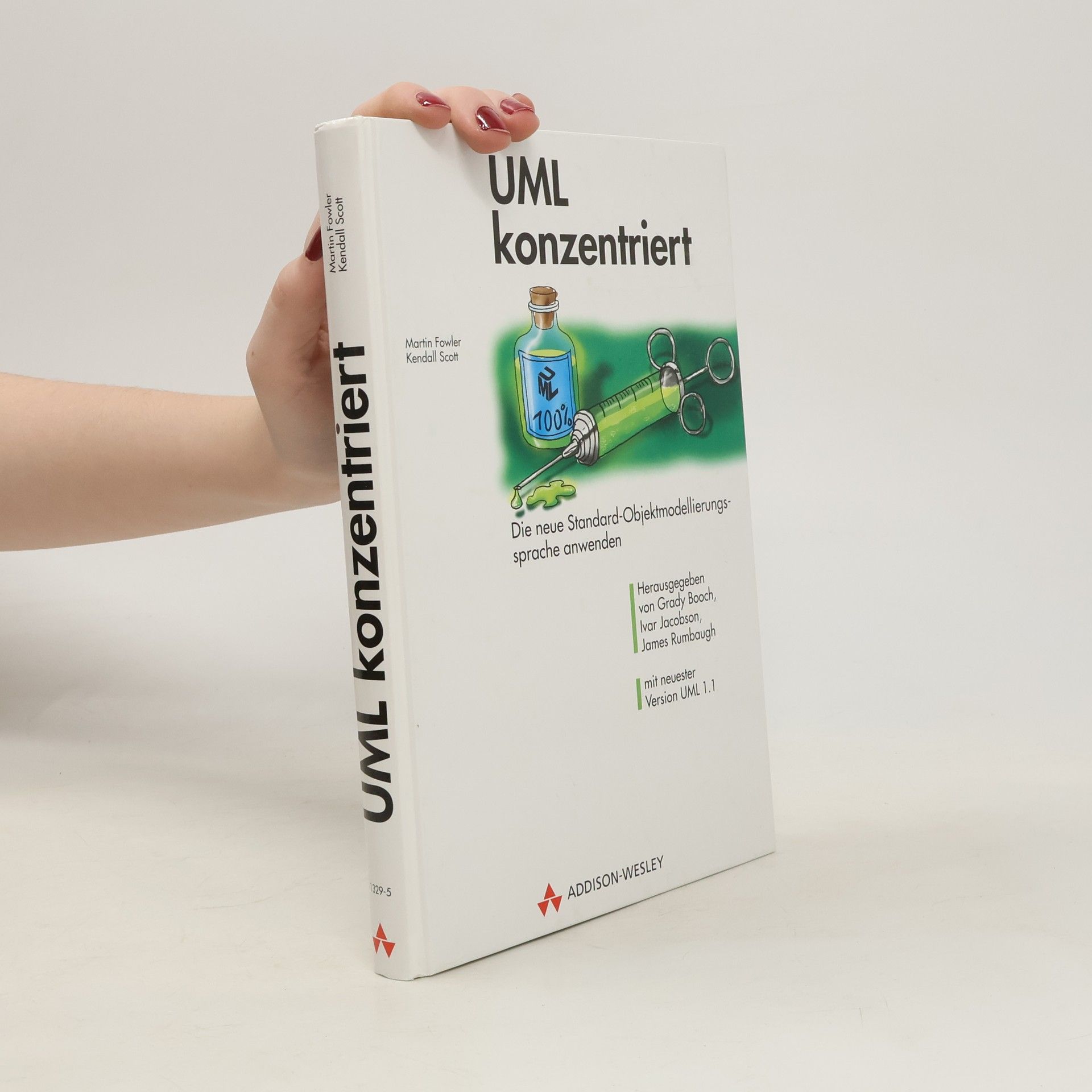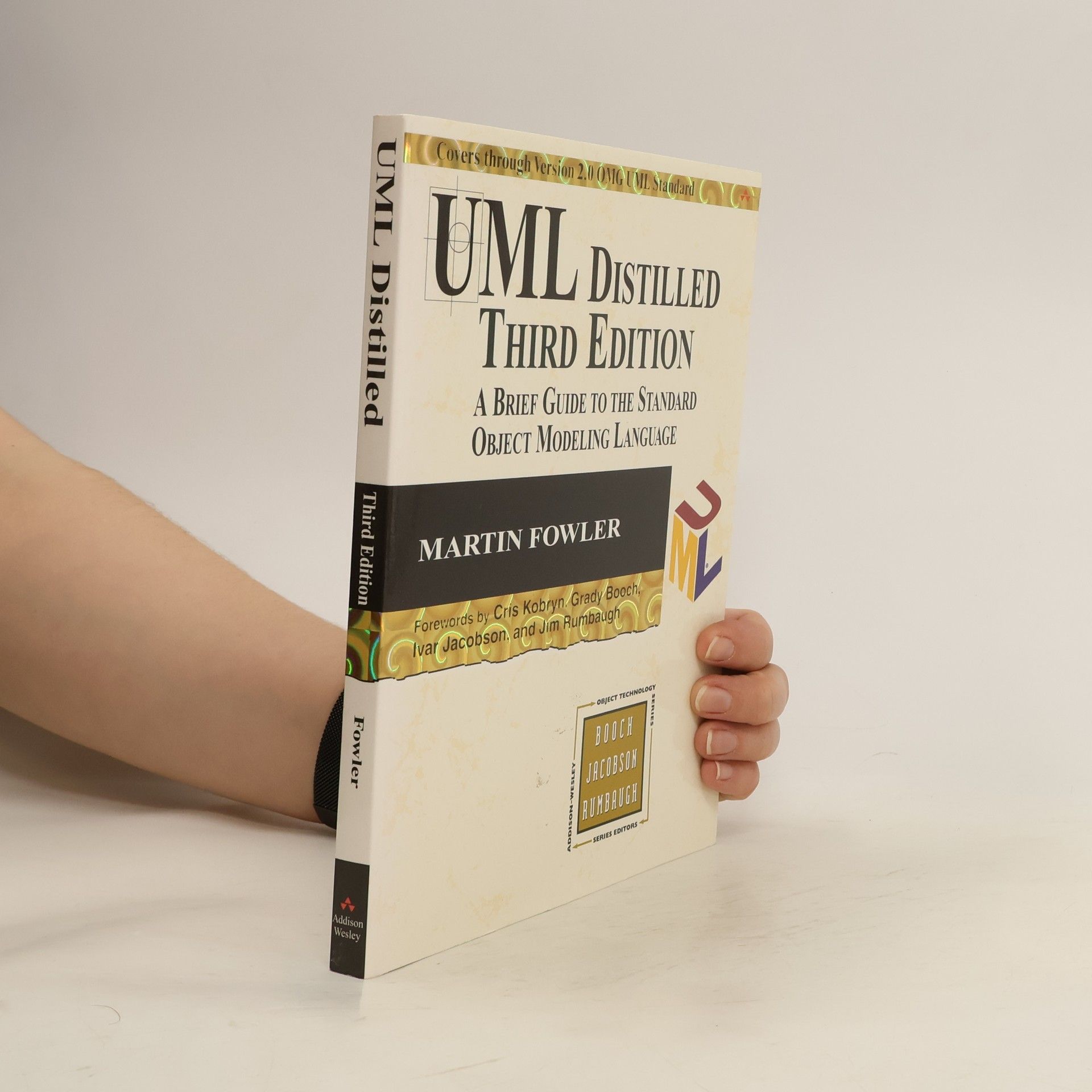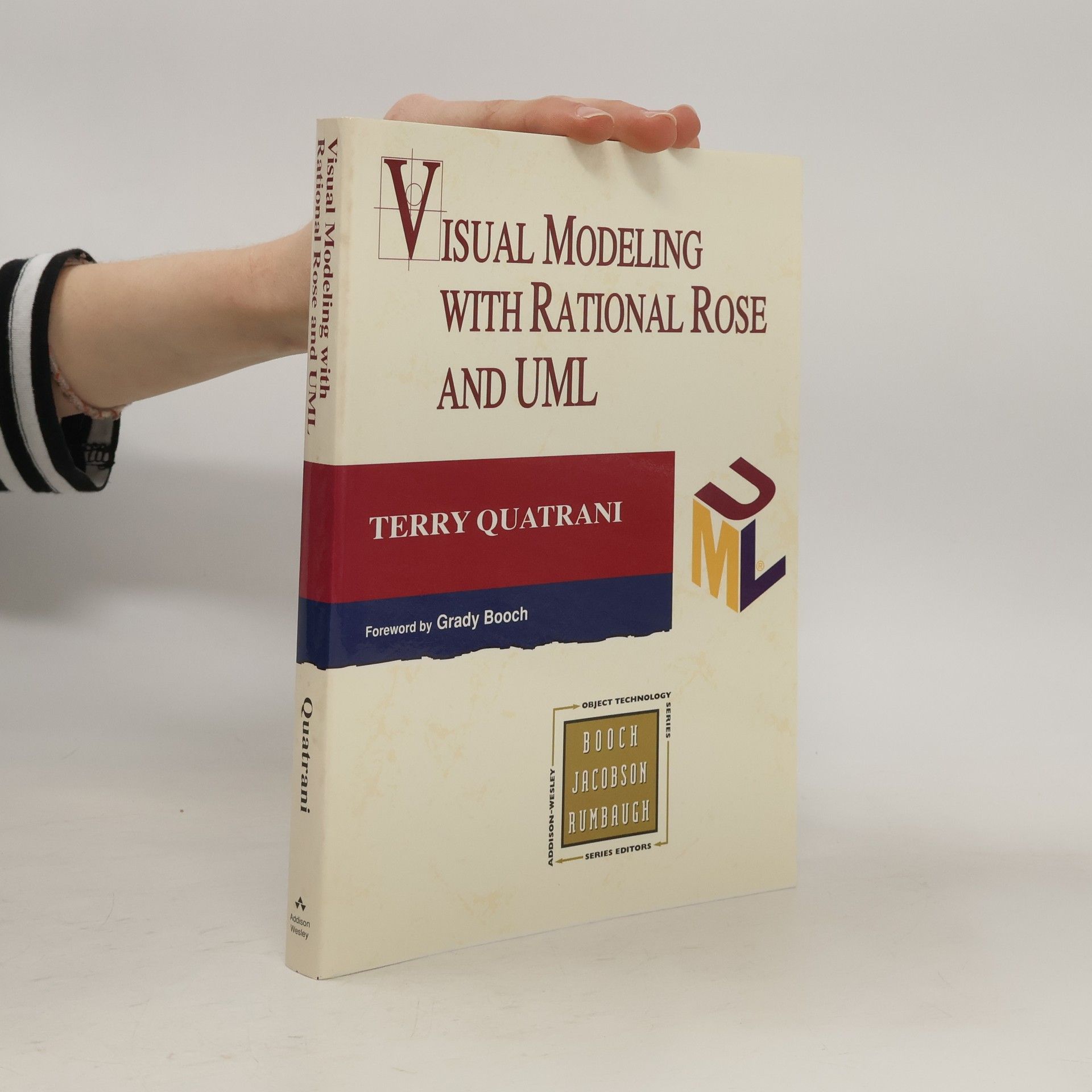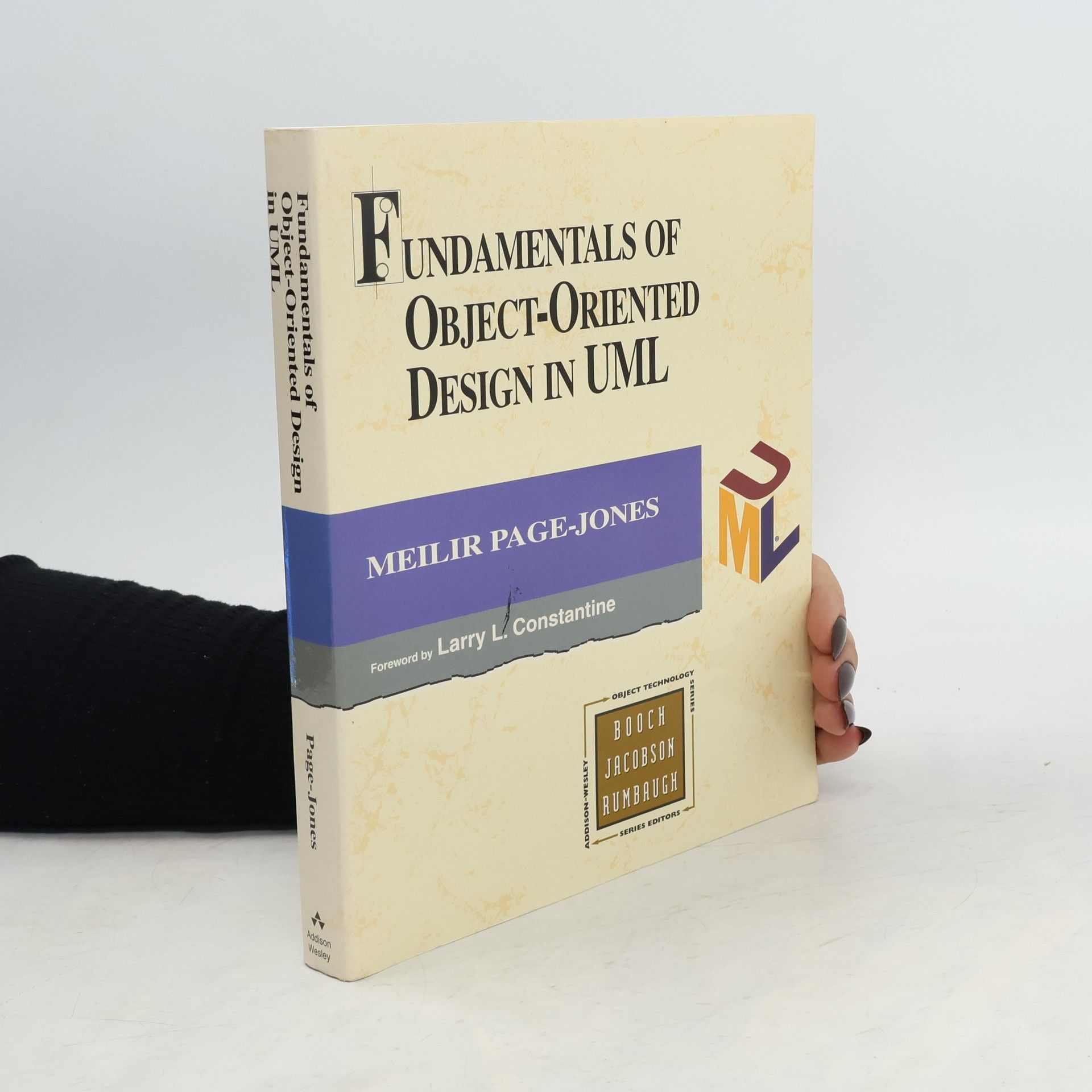Addison-Wesley Object Technology Series Reihe
Diese Reihe befasst sich mit den Feinheiten der objektorientierten Programmierung und moderner Softwarearchitekturen. Sie untersucht wesentliche Prinzipien, Entwurfsmuster und Best Practices, die für die Entwicklung robuster und skalierbarer Systeme unerlässlich sind. Die Sammlung bietet praktische Anleitungen und theoretische Grundlagen für Softwareentwickler, die die neuesten Technologien und Methoden beherrschen möchten.
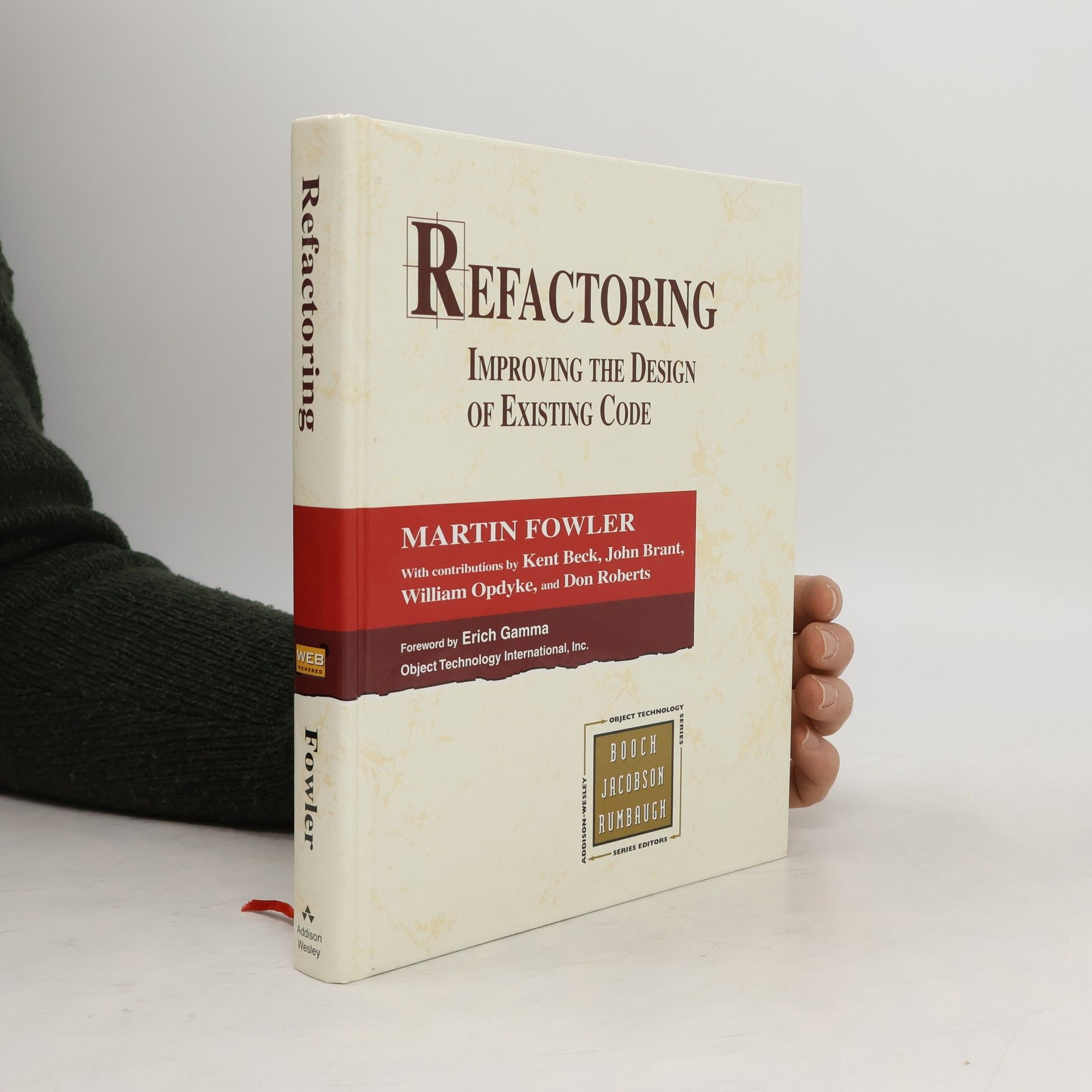





Empfohlene Lesereihenfolge
Getting started; Basic structural modeling; Advanced structural modeling; Basic behavioral modeling; Advanced behavioral modeling; Architectural modeling; Wrapping up
Zu diesem Thema Der Rational Unified Process (kurz RUP) ist - ein Prozessmodell und - ein Produkt der Firma Rational (vergleichbar mit Catalysis der Fa. Platinum). Das Prozessmodell dient zur Softwareentwicklung mit UML. Zu diesem Titel Das Buch gibt eine Einführung sowohl in das Prozessmodell als auch in das Produkt. Es erklärt die Konzepte des Modells kurz und prägnant und führt in die praktische Arbeit mit dem Produkt ein. Teile des Buches sind von Grady Booch verfaßt. Zielgruppe Softwareentwickler Der Autor Philippe Kruchten ist der führende Architekt des Produktes bei Rational.
Refactoring
- 504 Seiten
- 18 Lesestunden
Refactoring ist eine Methode, bereits geschriebene Software im Entwurf zu verbessern, ohne ihr Verhalten zu ändern. Das Buch beschreibt die Prinzipien des Refactorings anschaulich anhand eines einführenden Beispiels. Danach wird in Form eines Katalogs auf ca. 70 getestete Refactorings eingegangen. Der Code ist in Java geschrieben, die zugrunde liegenden Prinzipien sind auf alle objektorientierten Sprachen übertragbar. Deutsche Übersetzung von Prof. Dr. Bernd Kahlbrandt.
Refactoring. Improving the Design os Existing Code
- 464 Seiten
- 17 Lesestunden
Refactoring is gaining momentum amongst the object oriented programming community. It can transform the internal dynamics of applications and has the capacity to transform bad code into good code. This book offers an introduction to refactoring.
Developing Applications with Visual Basic and UML
- 592 Seiten
- 21 Lesestunden
An essential resource for Visual Basic (VB) programmers who want to develop applications that are both resilient and robust, Developing Applications with Visual Basic and UML describes a proven development process for designing and implementing object-oriented client/server applications in VB using the Unified Modeling Language (UML). Guided by his own experiences as a developer applying UML and VB, the author provides clear explanations of the fundamentals of UML while also examining and illustrating the often misrepresented object-oriented properties of Visual Basic. In addition, the book incorporates in-depth information on developing VB applications utilizing DNA concepts, incorporating technologies such as DCOM and MTS, and integrating Web tools such as ASP, VB Script, and JavaScript to Internet-enable Visual Basic applications. A significant case study runs throughout the book, leading the reader through the lifecycle of a projectofrom requirements analysis to modeling and prototyping through finalizing the architecture and generating code. Through this study, the author demonstrates the design benefits of UML and shows how to translate a UML specification into Visual Basic code.
Managing Software Requirements. A Use Case Approach
- 544 Seiten
- 20 Lesestunden
bull; New content, new theme, new subtitle! The use case approach is a cornerstone technique, and a more prescriptive approach is employed bull; Proven "team skills " exercises help the reader roll the requirements process out to the rest of the team bull; Foreword by Ed Yourdon
Ta książka jest zaktualizowanym wydaniem praktycznego przewodnika po refaktoryzacji. Choć jest przeznaczona dla profesjonalnego programisty, znalazło się tu zrozumiałe wprowadzenie do tego zagadnienia z opisem celów, technik i możliwości refaktoryzacji. Wspomniano także o problemach związanych z refaktoryzacją. Natomiast zasadniczą część książki stanowi znakomicie uzupełniony i wzbogacony katalog przekształceń refaktoryzacyjnych. Do zilustrowania poszczególnych technik refaktoryzacji autorzy wybrali język JavaScript, jednak kod został przedstawiony w taki sposób, aby prezentowane koncepcje bez trudu zrozumiał każdy programista.
This book is the concise, 'distilled' introduction that developers of real-time systems need to begin the transition to object-oriented analysis and design and modeling with UML. The book includes special in-depth discussions of finite state machines, object identification strategies, and real-time design patterns to help beginning and experienced developers alike.
Refaktoring. Zlepšení existujícího kódu
- 394 Seiten
- 14 Lesestunden
Refaktoring nás učí, jak upravit stávající ne příliš šťastně navržené programy tak, abychom z nich získali programy, které sice budou dělat totéž, avšak jejich nový návrh umožní snadnější udržovatelnost a modifikovatelnost, čímž výrazně sníží náklady na jejich budoucí provoz. Refaktoring je jedním ze zaklínadel učebnic moderního programování, které již dopředu počítají s tím, že se nám nepodaří navrhnout systém hned napoprvé optimálně, a proto nás seznámí s postupy, jak později tyto počáteční nekvalitní návrhy optimalizovat.
Modeling XML Applications with UML
- 368 Seiten
- 13 Lesestunden
(Pearson Education) Reveals how to integrate XML and UML to create dynamic, interactive Web applications and meet optimal business-to-business application goals. Uses a large-scale running example to keep the material moving in a fluid, understandable manner. Features 'steps for success' and other tips for creating top designs. Softcover. XML (Document markup language).
More than 300,000 developers have benefited from past editions of UML Distilled . This third edition is the best resource for quick, no-nonsense insights into understanding and using UML 2.0 and prior versions of the UML. Some readers will want to quickly get up to speed with the UML 2.0 and learn the essentials of the UML. Others will use this book as a handy, quick reference to the most common parts of the UML. The author delivers on both of these promises in a short, concise, and focused presentation. This book describes all the major UML diagram types, what they're used for, and the basic notation involved in creating and deciphering them. These diagrams include class, sequence, object, package, deployment, use case, state machine, activity, communication, composite structure, component, interaction overview, and timing diagrams. The examples are clear and the explanations cut to the fundamental design logic. Includes a quick reference to the most useful parts of the UML notation and a useful summary of diagram types that were added to the UML 2.0. If you are like most developers, you don't have time to keep up with all the new innovations in software engineering. This new edition of Fowler's classic work gets you acquainted with some of the best thinking about efficient object-oriented software design using the UML--in a convenient format that will be essential to anyone who designs software professionally.
El libro sobre UML (Lenguaje Unificado de Modelado) enseña a utilizar este lenguaje gráfico para documentar sistemas de software. Cubre la versión 2.0 de UML, su vocabulario, reglas y construcciones, y ofrece soluciones a problemas de modelado comunes, aunque no es un manual de referencia completo. Es similar a una guía de usuario.
"Per Kroll and Philippe Kruchten are especially well suited to explain the RUP...because they have been the central forces inside Rational Software behind the creation of the RUP and its delivery to projects around the world." --From the Foreword by Grady Booch This book is a comprehensive guide to modern software development practices, as embodied in the Rational Unified Process, or RUP. With the help of this book's practical advice and insight, software practitioners will learn how to tackle challenging development projects--small and large--using an iterative and risk-driven development approach with a proven track record. The Rational Unified Process Made Easy will teach you the key points involved in planning and managing iterative projects, the fundamentals of component design and software architecture, and the proper employment of use cases. All team members--from project managers to analysts, from developers to testers--will learn how to immediately apply the RUP to their work. You will learn that the RUP is a flexible, versatile process framework that can be tailored to suit the needs of development projects of all types and sizes. Key topics covered Use this book to get quickly up to speed with the RUP, so you can easily employ the significant power of this process to increase the productivity of your team.
Visual Modeling with Rational Rose and UML
- 222 Seiten
- 8 Lesestunden
As software application development becomes more complex, the benefits of developing a comprehensive "blueprint" that enables developers to visualize the complete scope of a project increase substantially. Three elements are needed to successfully diagram and visualize a software system - a process, a notation, and a modeling tool. This timely new book introduces the reader to three of the most popular and influential such elements: the Rational Objectory Process, the Unified Modeling Language (UML), and Rational Rose. With the practical direction offered in this book, you will be able to specify, visualize, document, and create software solutions
With this book, object-oriented developers can hone the skills necessary to create the foundation for quality software: a first-rate design. The book introduces notation, principles, and terminology that developers can use to evaluate their designs and discuss them meaningfully with colleagues. Every developer will appreciate the detailed diagrams, on-point examples, helpful exercises, and troubleshooting techniques.
Object Technology Series: Objects, Components, and Frameworks With UML
The Catalysis™ Approach
- 785 Seiten
- 28 Lesestunden
Here is the first book to introduce Catalysis, a next-generation method for constructing open component systems from frameworks, based on UML and OMG standards. Using Catalysis, programmers have the ability to describe a complex system based on content perspectives or views. Each view defines a pattern with supporting models. Catalysis provides well-defined consistency rules across models and the mechanisms for composing views. .

